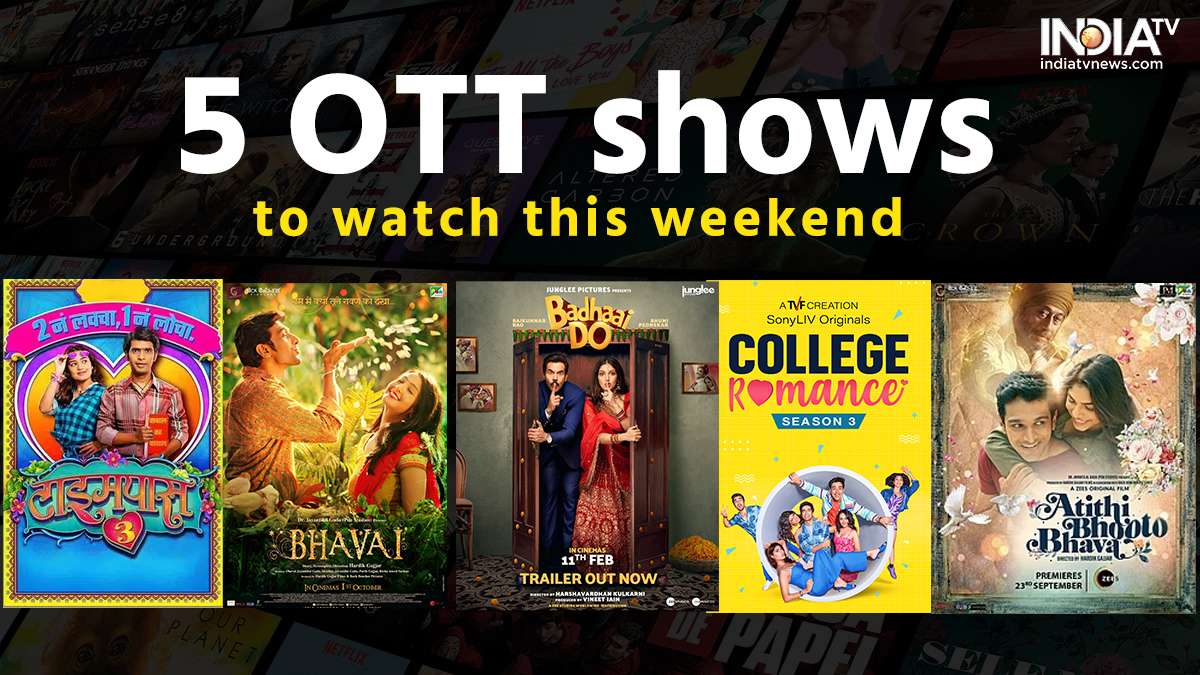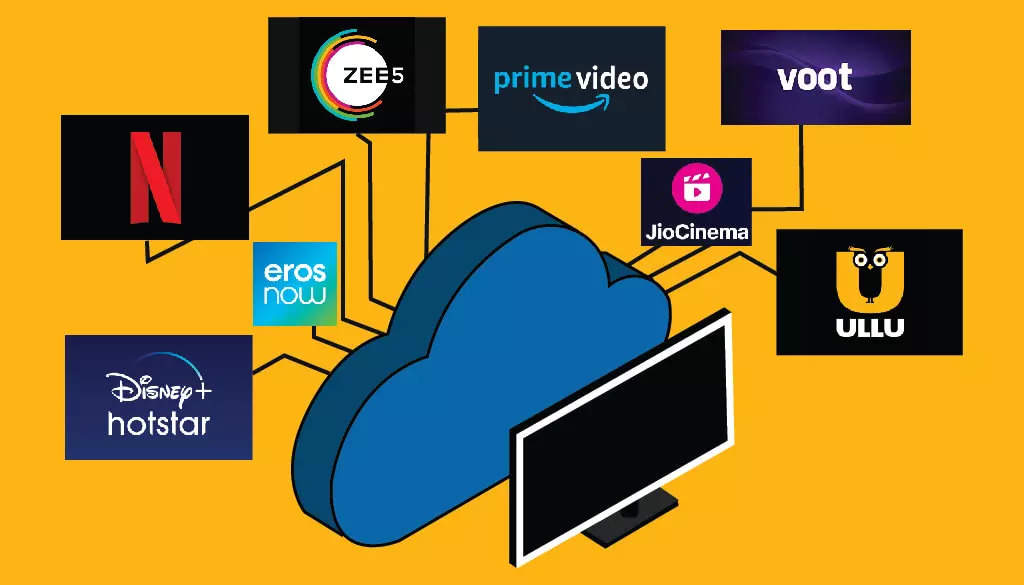OTT: The art of entertaining is fundamentally about enthralling and exciting people, transporting them from the ordinary into a realm of feeling and imagination. It can take many forms, from the enthralling stories recounted around historic campfires to the visually stunning productions of contemporary movies. Traditionally, we relied on television, radio, and theatres to satiate our thirst for entertainment. However, with the emergence of Over-The-Top (OTT) platforms, which change how we consume material by sending a vast selection of digital information straight to users over the internet, a new era has begun. These easily accessed platforms are revolutionizing the entertainment industry with their fascinating and revolutionary effects. It is clear from future projections that, by 2040, OTT platforms will have a significant impact on the entertainment sector.
This article examines the elements that led to the emergence of over-the-top (OTT) platforms, their current importance, and any possible effects they might have on the production, consumption, and distribution of content as well as the traditional media environment.
Table of Contents
The Rise of OTT Platforms: A Historical Context
The emergence of Over-The-Top (OTT) platforms in the early 2000s brought about a dramatic change in the entertainment industry. During this time, a new age in content consumption began, driven by trailblazing businesses like Netflix that dared to explore the unexplored territory of online content streaming.

These over-the-top (OTT) platforms started off with a relatively low-key objective: offering a digital library of classic films and TV series. This creative strategy introduced the idea of on-demand streaming and provided a change from traditional entertainment delivery techniques. Audiences were freed from the strict timetables imposed by conventional television shows and movie hours. Rather, a new era of viewer empowerment was ushered in as they could now explore a wealth of content at their leisure.
The first ripple in the pond that signalled the beginning of a much more significant revolution was the ease of on-demand streaming. An environment that was conducive to the growth of OTT platforms was produced by advancements in internet infrastructure and connectivity. As technology advanced steadily, consumer tastes changed, calling for diverse and creative content offerings in addition to ease.

OTT platforms started a journey to remake themselves after realizing this desire. They quickly progressed from being merely archives of nostalgic favorites to producing and distributing their own unique content. This tactical change signaled a sea change, upending the fundamental assumptions of the established broadcast and cable TV businesses.
Entertainment was given a new lease on life by original programming, which captivated viewers with stories never told before. OTT platforms have embraced storytelling in all its forms, from uplifting comedies and eye-opening documentaries to riveting dramas and exciting mysteries, as they unleash their creative prowess. The decades-long monopoly that traditional media had enjoyed was broken by this creative renaissance, which created an even playing field for both seasoned and up-and-coming storytellers.
The emergence of over-the-top (OTT) offers was a qualitative one rather than just a quantitative one. Instead of being restricted to a preset menu of information, audiences were given the keys to a vast universe where customization and choice were paramount. This change sent shockwaves across the entertainment sector, impacting production companies, content producers, and even the basic idea and presentation of stories.
Factors Driving the Rise of OTT Platforms
- Ease and Personalization: The ease and personalization provided by OTT platforms are unmatched. To accommodate their schedules and tastes, viewers can access the material whenever and wherever they choose. A more customized and interesting watching experience has been made possible by the options to build watchlists, personalized profiles, and carefully chosen recommendations.
- Variety of Content and Unique Programming: Over-the-top (OTT) platforms have made significant investments in creating unique content, which includes anything from movies and TV shows to stand-up specials and documentaries. Because of their dedication to producing interesting and varied content, OTT platforms have drawn in a larger audience and established themselves as fierce rivals in the entertainment sector.

- Global Reach and Accessibility: Content creators may now reach audiences anywhere in the globe without being constrained by conventional distribution methods, thanks to the global accessibility of over-the-top (OTT) platforms, which have eliminated geographical constraints. This has improved content diversity and promoted intercultural dialogue.
- Technological Developments: Better video compression algorithms and quicker internet connections are only two examples of how streaming technology has advanced, enabling smooth content delivery. This has improved the user experience overall and decreased buffering problems, which encourages users to embrace OTT platforms even more.
- Disruption of old Models: By providing subscription-based and ad-supported options that go against the old pay-TV model, over-the-top (OTT) platforms have caused a disruption in traditional media models. The industry’s rivalry has increased as a result of this disruption, which forced established media corporations to adapt and launch their streaming services.
The Current Significance of OTT Platforms
OTT platforms have already had a major impact on the entertainment industry. With their enormous subscriber bases, major competitors like Netflix, Amazon Prime Video, Disney+, and Hulu are challenging the dominance of broadcast television and cable. These platforms’ status in popular culture has been further cemented by their capacity to create highly acclaimed and culturally significant original material, such as “The Crown,” “The Mandalorian,” and “Stranger Things.“

Additionally, OTT platforms have transformed how people consume material. The ability to watch whole seasons of a TV show at once has made binge-watching—the act of watching several episodes of a show in quick succession—a popular habit. Because of this change in watching habits, narrative structures, and storytelling strategies have changed as content producers try to hold viewers’ attention for longer periods of time.
In the End
In conclusion, the entertainment business has already been significantly impacted by the emergence of OTT platforms, and by 2040, that impact is probably going to grow even larger. These platforms’ global accessibility, customization options, and ease of use have upended conventional media models and changed how people consume content. Future predictions indicate that technology will continue to advance, that content creation and delivery will shift, and that consumer expectations and behavior will alter.
Despite the difficulties brought about by the emergence of OTT platforms, it is impossible to deny their promise to democratize content creation, provide a variety of stories, and offer cutting-edge viewing experiences. In the changing entertainment scene of 2040, industry stakeholders, content creators, and legislators must work together to overcome these obstacles and fully utilize OTT platforms for the benefit of creators and consumers.
Also Read: Kannada Movie ’02’ Blends Supernatural & Science in Medical Thriller – A Must-Watch!








